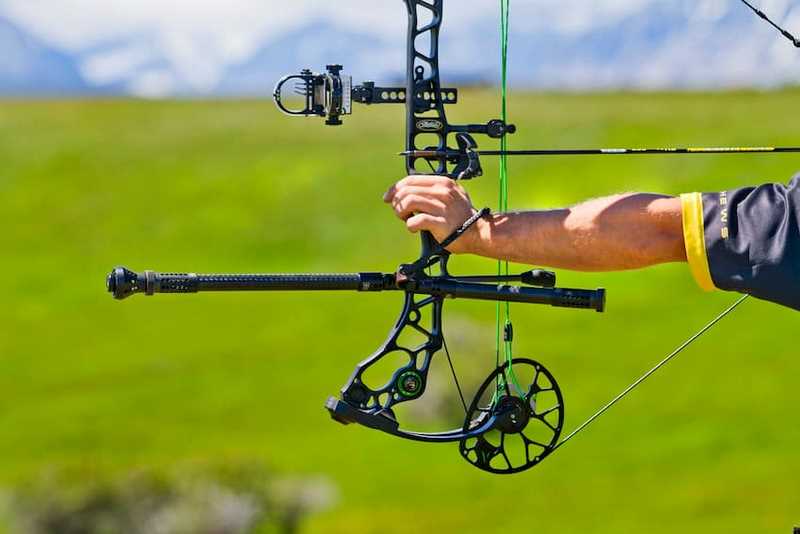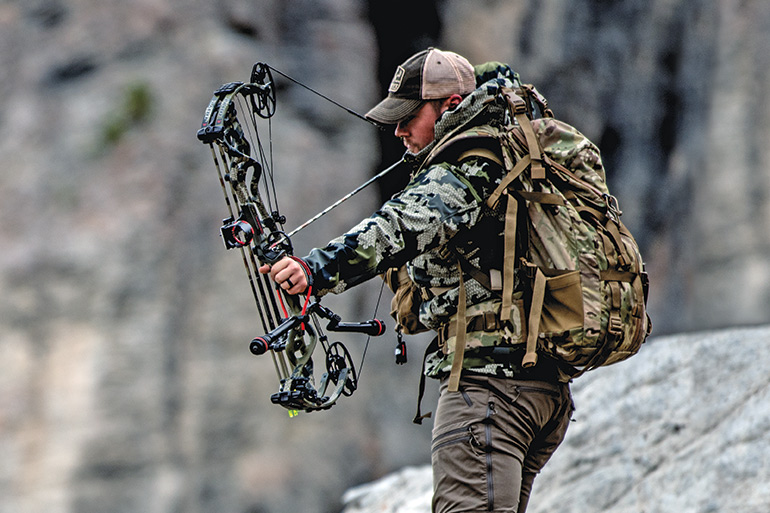Archery Stabilizer Basics: Improving Your Shooting Experience
Archery Stabilizer Basics: Improving Your Shooting Experience
Blog Article
The Ultimate Guide to Picking the Right Archery Stabilizer for Boosted Accuracy
Archery is a sport that requires precision and precision, and choosing the right equipment is critical for accomplishing optimum results. Amongst the different accessories available, an archery stabilizer plays a significant duty in improving precision. However, with a lot of alternatives on the marketplace, it can be frustrating to determine which stabilizer is the best fit for your demands. In this comprehensive guide, we will certainly discover the vital factors to think about when selecting an archery stabilizer for improved accuracy. From finding the optimal length to understanding the different designs and materials, we will dive right into every little thing you require to recognize to make an informed choice. So, whether you are a seasoned archer looking to update your equipment or a beginner seeking guidance, join us on this trip as we unravel the keys to picking the ideal archery stabilizer.
Size: Locating the Optimum Stabilizer Size
Establishing the optimal stabilizer size is vital when picking an archery stabilizer for optimum performance. A stabilizer that is also long can make the bow feel difficult and top-heavy to manage, while a stabilizer that is too brief might not offer enough stability and dampening of resonances.
A longer stabilizer, usually varying from 8 to 12 inches, can offer higher security and decrease bow torque. This is especially useful for archers that shoot with a high draw weight or those who have a tendency to torque the bow during the shot. The included length helps to disperse the weight evenly and counterbalance any kind of torque or motion.
On the other hand, a much shorter stabilizer, usually between 4 to 7 inches, provides a lot more ability to move and quicker feedback. It is preferred by archers who shoot with a reduced draw weight or those who call for even more wheelchair, such as hunters or 3D shooters. The shorter size permits for easier activity via tight spaces and faster changes.
Ultimately, the optimal stabilizer size is a matter of personal preference and shooting style. It is recommended to trying out various sizes and observe the results on security and precision. Consulting with knowledgeable archers or professionals can likewise provide important understandings and suggestions.
Weight: Identifying the Appropriate Stabilizer Weight
After taking into consideration the optimum stabilizer size, the next essential factor to consider when selecting an archery stabilizer is identifying the proper stabilizer weight - archery stabilizer. The weight of the stabilizer plays a vital role in improving accuracy and security throughout the shot
The weight of the stabilizer impacts the equilibrium and control of the bow. A heavier stabilizer can offer enhanced stability and control, especially for shooters with a propensity for unstable hands or irregular shots. It helps to soak up the vibrations and recoil produced by the bow, minimizing torque and minimizing the result on the arrowhead's trip.
On the other hand, a lighter stabilizer enables a quicker and more responsive bow. It can be advantageous for shooters who focus on maneuverability and speed over security. Lighter stabilizers also reduce fatigue throughout lengthy shooting sessions or competitions.
To figure out the suitable stabilizer weight for your requirements, it is essential to consider your capturing style, physical stamina, and bow configuration. Try out different weights and observing the effect on your capturing performance is essential to discovering the excellent balance.
Ultimately, the ideal stabilizer weight will differ for each specific archer. It is advised to begin with a moderate weight and make modifications based upon personal preference and capturing outcomes. Bear in mind, the goal is to accomplish a stable and regulated shot, while also keeping comfort and simplicity of usage.
Materials: Selecting the Right Materials for Resilience and Efficiency
When picking an archery stabilizer, it is critical to meticulously think about the materials used in its construction to make sure sturdiness and enhance efficiency. The choice of products can significantly influence the overall quality and effectiveness of the stabilizer.
One of one of the most generally used materials for stabilizers is carbon fiber. Carbon fiber offers a high strength-to-weight ratio, making it light-weight yet unbelievably solid. This product lowers and absorbs resonances bow torque, causing boosted security and precision. In addition, carbon fiber stabilizers are resistant to temperature level changes and are less likely to warp or bend over time.
Another popular product for stabilizers is aluminum. Aluminum stabilizers are recognized for their durability and strength. They provide exceptional moistening capabilities, decreasing the amount of shock and vibration transferred to the shooter's hand. Light weight aluminum stabilizers likewise provide a wide variety of personalization options, enabling archers to adjust the weight and size to suit their preferences.
Some stabilizers are constructed utilizing a combination of products. As an example, a stabilizer might have a carbon fiber core wrapped in an aluminum covering. This crossbreed design incorporates the most web effective top qualities of both materials, giving optimal security, sturdiness, and efficiency.
Style: Understanding the Different Stabilizer Layouts and Their Effects
Taking into consideration the materials used in archery stabilizers, it is necessary to now dig into the various designs of stabilizers and their particular impacts. The style of an archery stabilizer plays an important role in enhancing precision and minimizing vibration during the shot. There are a number of various designs offered in the market, each with its own one-of-a-kind qualities.

One more prominent style is the side bar stabilizer. This layout involves connecting a brief pole to the side of the bow, alongside the main long rod. Side bar stabilizers help in reversing the weight of devices, such as sights or quivers, and supply added stability to the bow.
Some stabilizers feature flexible weights. These stabilizers permit archers to adjust the balance and feel of their bows by including or getting rid of weights. This feature is particularly valuable for archers that favor a specific weight distribution or intend to trying out different setups.
In addition, some stabilizers incorporate dampening modern technology to reduce resonance and sound. These stabilizers commonly have built-in dampeners or make use of materials that soak up resonances, resulting in a smoother and quieter shot.

Devices: Checking Out Added Accessories for Improved Security
These accessories are created to work in combination with the archery stabilizer to offer an also greater level of stability and precision. One such device is the V-bar or the side stabilizer place.
One more device that can improve stability is important source a bow sling. A bow sling is a strap that affixes to the bow and permits the archer to maintain a loosened up hold on the bow deal with without the worry of dropping it (archery stabilizer). This kicked back grasp aids to minimize muscular tissue tension and enables a much more secure and regular shot
Furthermore, a stabilizer weight system can be made use of to fine-tune the equilibrium and stability of the bow. These weight systems typically contain small weights that can be included or eliminated from the stabilizer to change the equilibrium factor of the bow. By discovering the optimal balance factor, archers can attain an extra accurate and secure shot.
Verdict
In final thought, selecting the right archery stabilizer involves considering variables such as length, weight, products, design, and extra devices. The ideal stabilizer size and weight will certainly depend on individual choices and shooting design.
Establishing the ideal stabilizer size is critical when picking an archery stabilizer for optimal efficiency. A stabilizer that is too long can make the bow really feel top-heavy and challenging to regulate, while a stabilizer that official site is as well brief may not give sufficient stability and dampening of resonances - archery stabilizer.Taking into account the products used in archery stabilizers, it is important to currently delve right into the various styles of stabilizers and their particular results. Side bar stabilizers aid in counterbalancing the weight of accessories, such as views or quivers, and provide extra stability to the bow
These weight systems generally consist of small weights that can be included or eliminated from the stabilizer to readjust the equilibrium point of the bow.
Report this page